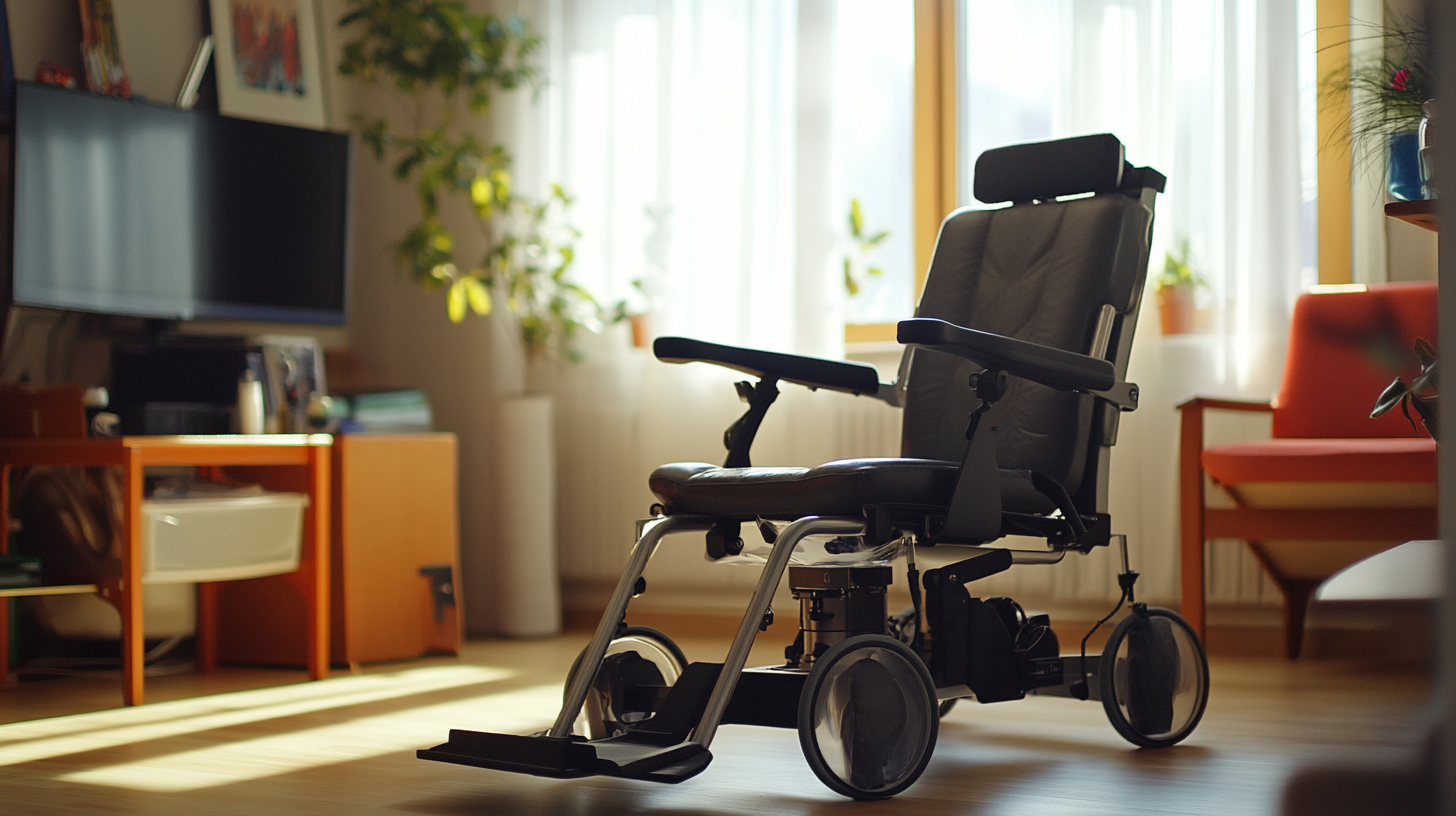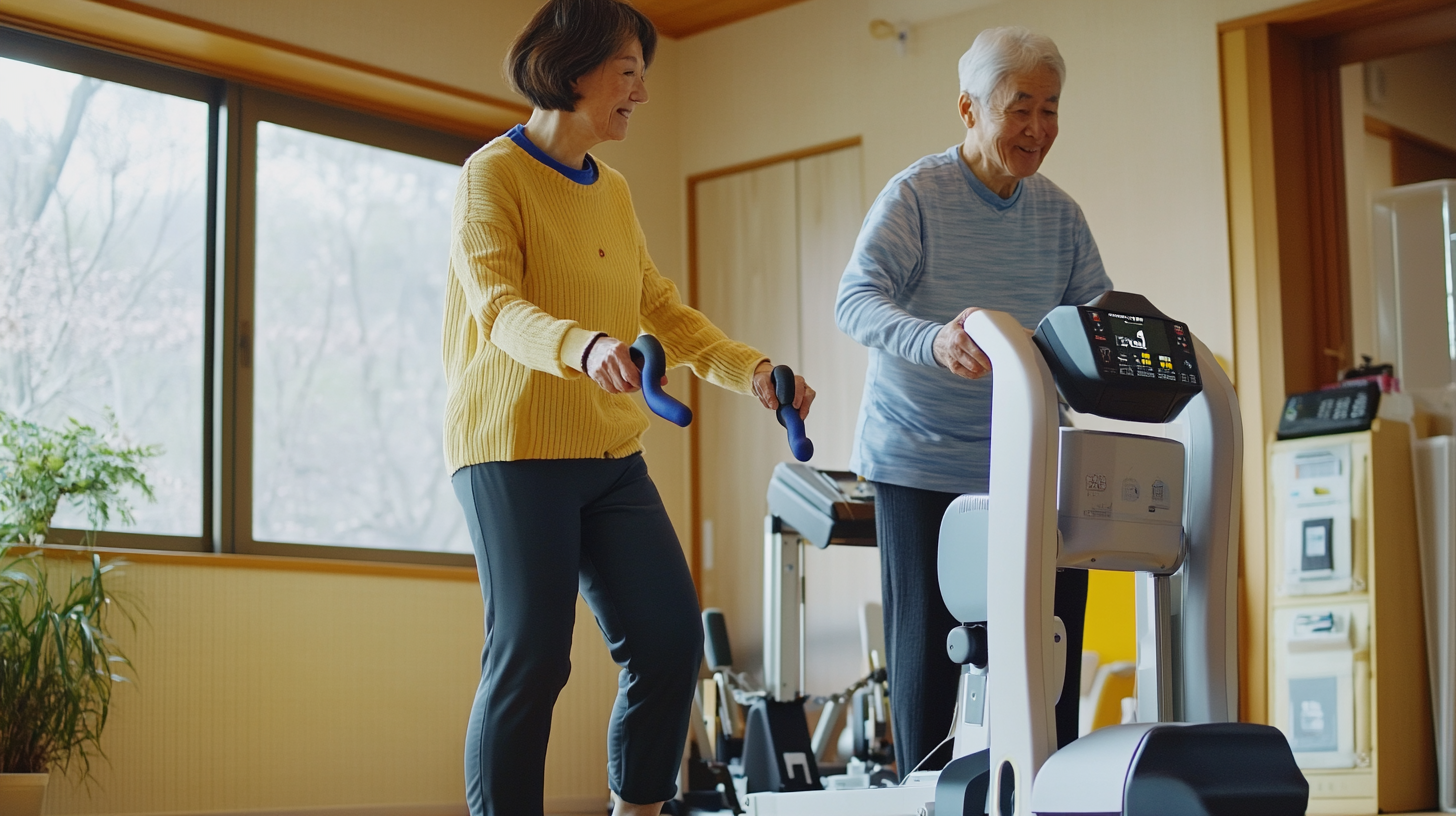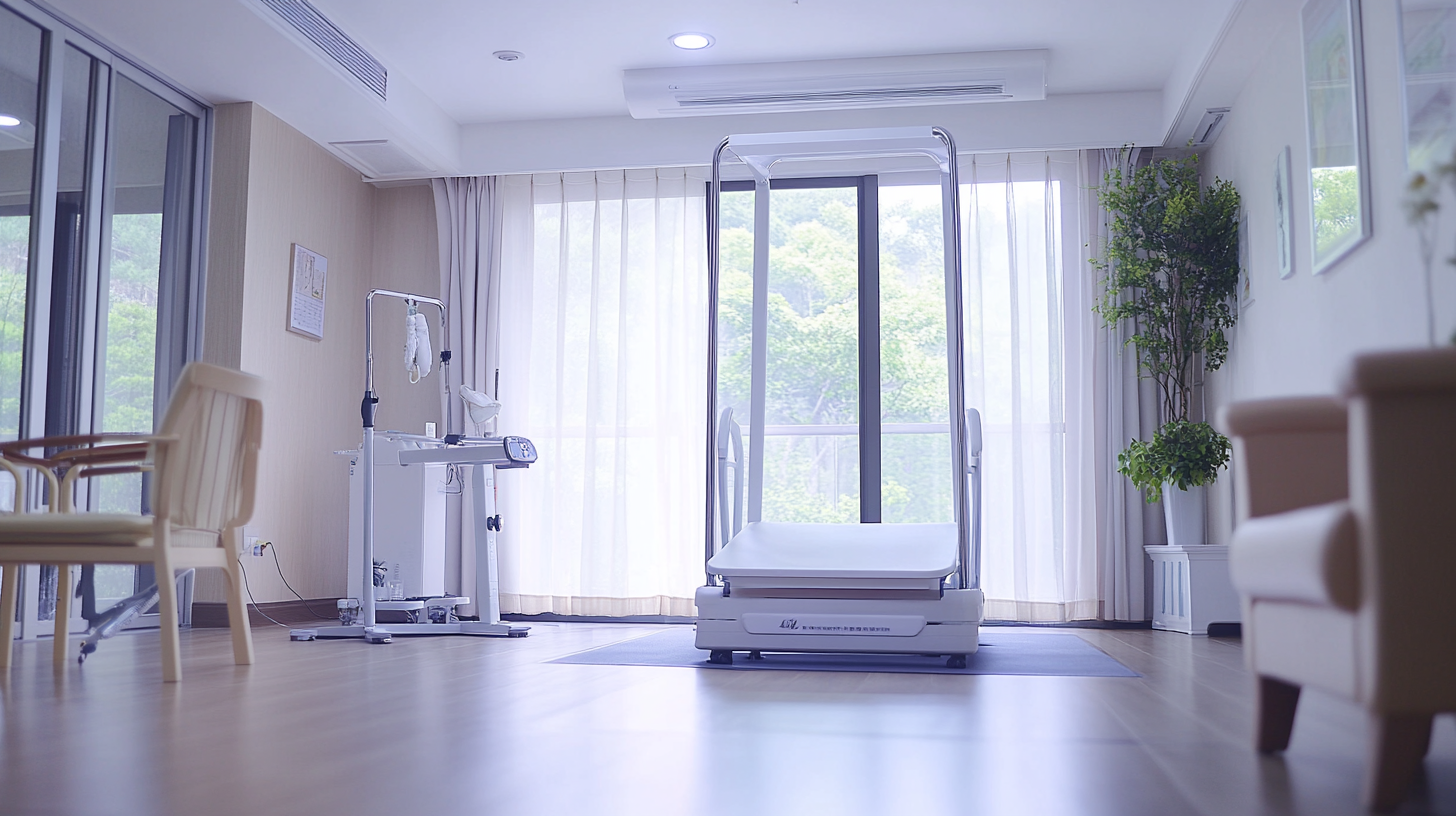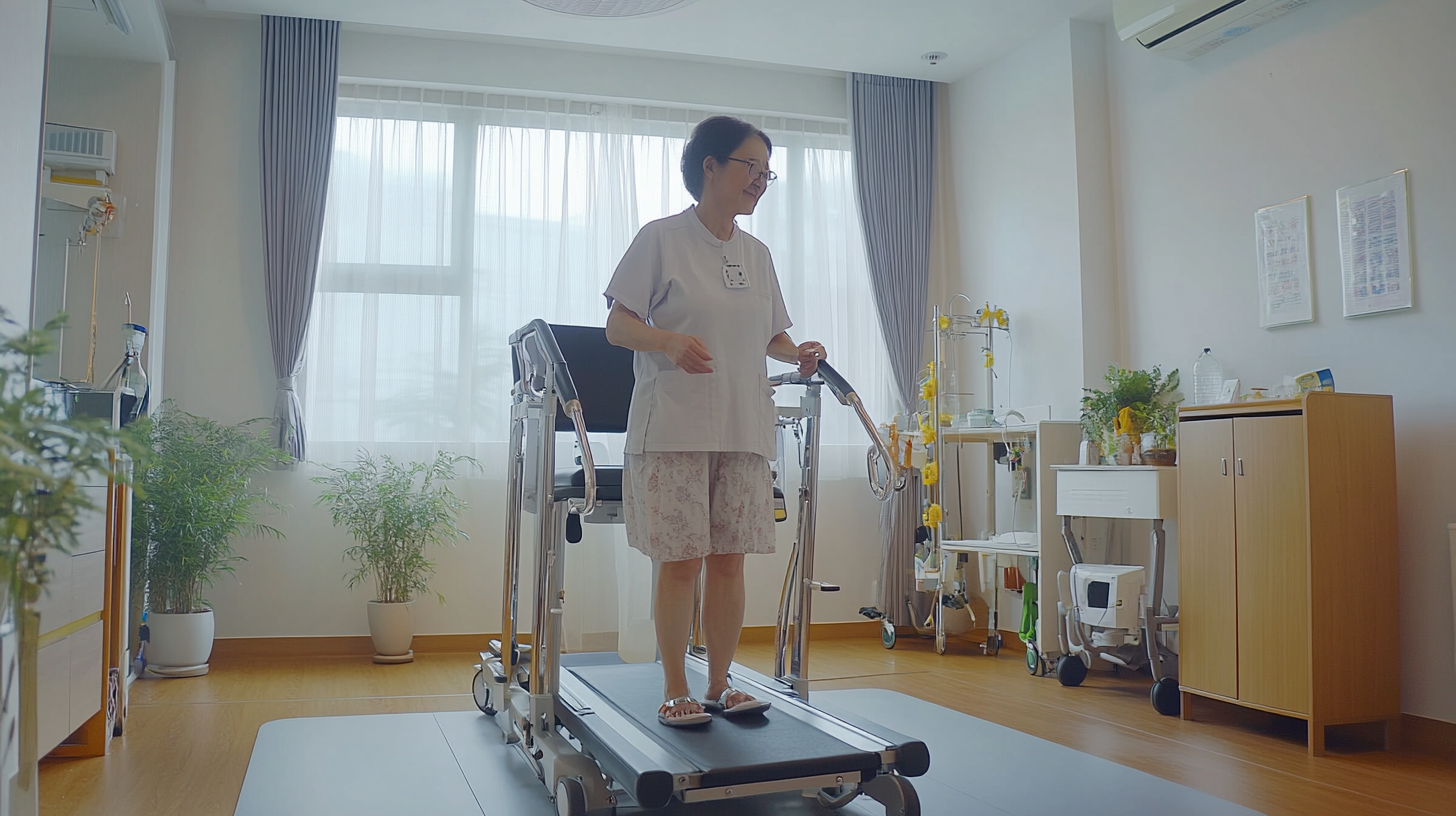Empowering Seniors with Innovative Rehabilitation Equipment for Enhanced Quality of Life
Getting older is associated with putting an emphasis on a high quality of life that increasingly becomes important both for individuals and the caregivers who attend to them. Technology has significantly changed every aspect of rehabilitation, especially from rehabilitation equipment for the aged. These new solutions have dealt with most of the physical aspects of rehabilitation, but at the same time, they have helped elderly people fight for their independence and greater participation in daily activities. Thus, rehabilitation equipment can be integrated into care plans for seniors to experience major improvements in mobility, strength, and general well-being.
Thus, whatever magic rehabilitation equipment has for elderly people, it extends beyond the physical. It builds confidence, encourages socialization, and betters mental health. This post will illustrate some of the innovative rehabilitative equipment available for aging populations and will examine their functions and beneficiaries while directing its focus at the older population. Join us as we unfold how these tools can positively impact the lives of seniors and make aging a more enriching journey rather than just a bearable one.

Innovative Rehabilitation Technologies Transforming Senior Care
The face of senior care is evolving with the coming of innovative rehabilitation technologies aimed at improving the lives of the elderly. These technologies will not only cater for their physical rehabilitation needs but will also keep them independent and socially connected. Focused on user-friendly designs, this technology is purely for the needs of old people, thus making the important activity of rehabilitation not less accessible and effective. One of the most promising innovations is virtual reality (VR) in rehabilitation. The virtual environments of VR can help provide seniors with immersive experiences that engage them in movement and cognitive activities related to rehabilitation. The variety of exercises could be tailored to the individual's abilities and inspire seniors to take part in their recovery actively. Further, rehabilitation therapy can take on the features of games that have been found to enhance engagement in therapeutic practices and make sessions pleasant as well as effective. Similarly, wearable devices are revolutionizing rehabilitative care at home. These devices have sensors and are linked to mobile applications and therefore allow the older adults to access real-time monitoring of their improvement. Caregivers and health care professionals will be able to monitor these parameters from a distance, which would allow interruption as soon as it is needed. That way, the senior empowerment home becomes most supportive. It has transformed the whole rehabilitation journey to an empowered one that ameliorates health and quality of life.

Key Benefits of Advanced Equipment for Senior Mobility and Independence
As global populations age, there has been a rise in demand for innovative rehabilitation gadgets that benefit senior mobility and independence. In their report, the World Health Organization states that by the year 2050, more than 15% of the world's population will be aged 60 and older, thus further emphasizing the urgency of finding effective solutions to improve their quality of life. Advanced rehabilitation devices, such as powered mobility scooters, walker-rehabilitation machines, and smart wearable technology, empower seniors to reclaim their independence, reduce falls, and promote greater engagement in daily activities.
Most importantly, one of the key benefits of the above advanced types of rehabilitation technologies has been the restoration of mobility. As reported in the Journal of Geriatric Physical Therapy, older adults using specialized rehabilitation equipment improve mobility and functional performance by almost 30% more than those using only conventional means. In addition, assistive technologies such as robotic exoskeletons not only help in movement but also develop muscle strength and health so that senior citizens can engage in social and physical activities.
And what about the psychological and emotional upside? An AARP survey found 87% of seniors think that independence is essential to their quality of life. With advanced rehabilitation equipment, older adults can confidently move through their environment, positively impacting their mental health. Eventually, enhanced mobility translates to social interaction, diminished feelings of loneliness, and a way of life that is fulfilling, thereby supporting the importance of innovative solutions for senior rehabilitation.

Success Stories: Seniors Thriving with New Rehabilitation Solutions
In recent times, enhancing the quality of life for the elderly has become an increasingly popular subject, primarily with rehabilitation by innovative equipment. Cases of success are coming up around the world in which custom-designed rehabilitation solutions empower older adults to regain their independence and improve health outcomes. Market studies show that the global rehabilitation equipment market will exceed $22 billion by 2025 on account of technological developments and increasing demand from ageing populations. This sets a trend that highlights addressing the unique rehabilitation needs of seniors.
An expressive case in point shows how innovative rehabilitation tools can turn into life instances. Seniors who tend to lose mobility because of agerelated conditions have reported amazing improvements after using specialized equipment designed for their unique needs. They do promote physical recovery, yet they also provide a sense of social participation and inclusion in community activities. With the incorporation of smart technology in rehabilitation devices-the entire scene is changing, making it easy for seniors to engage in a personalized exercise regime capable of enlivening their life.
Also, national policies on health initiated are now finding increasing realization for investing in rehabilitation solutions that promote healthy aging. Collaborations between health care and technology innovators are facilitating the birth of new rehabilitation approaches for the elderly. As these success stories become common, they will argue for the need for investment and research in rehabilitation technologies that demonstrate positive real-life impacts on seniors, which give them vitality and substance, even into their later years.

Integrating Innovative Tools into Traditional Rehabilitation Programs
Integrating new tools and technologies into rehabilitation programs is almost essential for enhancing the quality of life for seniors. The WHO states that 15% of the population aged 60 years or over experiences some form of disability. Hence, there is an urgent need for effective rehabilitation strategies for this group. In so doing, interventionists equip themselves to face the relevant challenges in the physical domain while motivating seniors to regain a greater grip on their recovery.
To these ends, these innovative rehabilitation technologies-stretching from smart exoskeletons, virtual reality, and interactivity to gaming-indeed help create added value in the process of recovery; and its importance has been proven beyond doubt. As shown in a study published in the Journal of Rehabilitation Research and Development, patients receiving rehabilitation with advanced technology reported a higher motivation level and demonstrated a mobility improvement of as much as 50% as compared to the conventional approach. Therefore, these instruments facilitate physical recovery through social interaction, which is crucial for mental health in seniors.
It also allows health care providers to closely monitor and modify rehabilitation plans according to the patient's progress through a specially designed form of data analytics. APTA states that the integration of data-driven methods will help enrich evaluation processes and provide more targeted interventions leading to faster recoveries. As we continue to evolve and grow as we innovate in rehabilitation practices, the coupling of modern rehabilitation technology with conventional programs will inevitably become more and more critical, enabling seniors to regain their independence and enjoy better quality of life.
Future Trends in Rehabilitation Equipment for Aging Populations
The trend of aging in the population all over the world calls for the development of new rehabilitation equipment that will specifically be designed for seniors. A report from the World Health Organization (WHO) indicates that the number of older people aged 60 will be jumping dramatically from 12% of the populace in 2015 to about 22% at 2050. This brings the requirement for new changes in rehabilitation schemes, which should help improve the quality of life among older adults.
Such innovations have played an increasingly significant role in the emerging rehabilitation equipment. For example, sensors in wearable devices are able to gather data regarding a senior's mobility and health status, allowing the individual to follow a more personalized rehabilitation program. A study that took place in 2021 conducted by the National Institute on Aging indicated that such technologies would yield a 30% improvement in mobility outcome among elderly patients who are undergoing rehabilitation. Moreover, mechanical means like robotic exoskeletons have become increasingly refined and allow seniors to regain independence by augmenting the movement and strength training. The market for these devices is projected to reach 3.5 billion dollars in 2026, reflecting a compound annual growth rate of more than 23%.
In addition, developments in virtual reality (VR) therapy and its potential future applications in cognitive and physical rehabilitation promise much. In addition, research from the American Journal of Geriatric Psychiatry claims that VR therapy can help significantly in reducing feelings of social disconnection and improving the mental health outcomes of older people. As rehabilitation equipment continues to grow in the scope under which it enables change within an aging population, the ability to enhance quality of life will surely surpass any future visiting hopes indicated by such changes. Hence, most of such attention is on healthcare providers and innovators alike.
